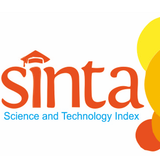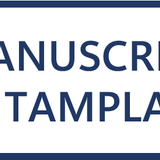Efektifitas Sistem Dekapsulasi Dengan Salinitas Berbeda Terhadap Daya Tetas (Hatching Rate) Siste Artemia
DOI:
https://doi.org/10.31851/jipbp.v19i1.15940Keywords:
Artemia, dekapsulasi, salinitas, daya tetasAbstract
Penelitian ini bertujuan untuk mengetahui pengaruh salinitas terhadap daya tetas artemia dekapsulasi. Rancangan penelitian menggunakan Rancangan Acak Lengkap (RAL) dengan 4 perlakuan dan 3 ulangan. Perlakuan A artemia dekapsulasi dengan salinitas 20 ppt Perlakuan B artemia dekapsulasi dengan salinitas 25 ppt, perlakuan C artemia dekapsulasi salinitas 30 ppt dan kontrol penetasan artemia non dekapsulasi salinitas 30 ppt. Hasil penelitian menunjukan bahwa terdapat perbedaan antar perlakuan. Daya tetas tertinggi terdapat pada perlakuan C yaitu Artemia dekapsulasi dengan salinitas 30 ppt sebesar 88,55%, daya tetas perlakuan B sebesar 68,51%, daya tetas perlakuan A sebesar 54,98%, dan kontrol menunjukkan daya tetas paling rendah yaitu sebesar 51,51%. Proses dekapsulasi dengan kadar Salinitas berbeda dalam proses penetasan siste artemia mempengaruhi daya tetas artemia. Artemia dekapsulasi dengan media penetasan bersalinitas 30 ppt mampu meningkatkan daya tetas sebesar 37,04% dari perlakuan kontrol.
This study aims to determine the effect of salinity on the hatching rate of decapsulated Artemia. The research design used a Completely Randomized Design (CRD) with 4 treatments and 3 replications. Treatment A of decapsulated artemia with a salinity of 20 ppt. Treatment B of decapsulated artemia with a salinity of 25 ppt, treatment C of decapsulated artemia with a salinity of 30 ppt and kontrol non-decapsulated artemia hatching with a salinity of 30 ppt. The research results showed that there were differences between treatments. The highest hatching rate was in treatment C, namely decapsulated Artemia with a salinity of 30 ppt of 88.55%, the hatching rate of treatment B was 68.51%, the hatching rate of treatment A was 54.98%, and the kontrol showed the lowest hatching rate of 51 .51%. The decapsulation process with different levels of salinity in the hatching process of the artemia system affects the hatching rate of artemia. Artemia decapsulation with hatching media with a salinity of 30 ppt was able to increase hatching rate by 37.04% from the kontrol treatment.
References
Aliyas, A. (2019). Pengaruh Salinitas yang Berbeda terhadap Penetasan Artemia sp. di Balai Benih Udang Desa Sabang Kecamatan Galang. Tolis Ilmiah: Jurnal Penelitian, 1(1).
Bengtson, David A., Philippe Léger, and Patrick Sorgeloos. "Use of Artemia as a food source for aquaculture." In Artemia biology, pp. 255-286. CRC Press, 2018.
Herawati, V. E., Hutabarat, J., & Radjasa, O. K. (2014). Nutritional Content of Artemia sp. Fed with Chaetoceros calcitrans and Skeletonema costatum. HAYATI Journal of Biosciences, 21a(4), 166-172.
Heryastuti E, Anggoro S, Subandiyono. 2016. Efisiensi dan Energetika Penetasan Kista Artemia (Artemia salina) pada Salinitas Media yang berbeda. Jurnal Perikanan Universitas Gadjah Mada, 18 (1), 27-30.
Hiola, R., & Tuiyo, R. (2014). Pengaruh Salinitas yang Berbeda terhadap Penetasan Kista Artemia sp. di Balai Benih Ikan Kota Gorontalo Provinsi Grontalo. The NIKe Journal, 2(2).
Istiqomah, Z., Subagiyo, S., & Yudiati, E. (2024). The Influence of Enrichment with Ascorbic Acid and Fermipan on Artemia sp. Exposed to Salinity Shock. Journal of Marine Biotechnology and Immunology, 2(1), 19-23.
Khairuman, M. I. K. M. I., Irwandi, I., & Aryzegovina, R. A. R. (2022). Pengaruh Salinitas Berbeda Terhadap Daya Tetas Kista Artemia sp. Journal of Scientech Research and Development, 4(2), 362-370.
Le, T. H., Hoa, N. V., Sorgeloos, P., & Van Stappen, G. (2019). Artemia feeds: a review of brine shrimp production in the Mekong Delta, Vietnam. Reviews in Aquaculture, 11(4), 1169-1175.
Mudjiman, A.1989. Udang Renik Air Asin (Artemia salina). Jakarta: Bhatara.
Putri, T., Supono, S., & Putri, B. (2020). Pengaruh jenis pakan buatan dan alami terhadap pertumbuhan dan kelangsungan hidup larva udang vaname (Litopenaeus vannamei). Jurnal Akuakultur Rawa Indonesia, 8(2), 176-192.
Seixas, P., Coutinho, P., Ferreira, M., & Otero, A. (2009). Nutritional value of the cryptophyte Rhodomonas lens for Artemia sp. Journal of Experimental Marine Biology and Ecology, 381(1), 1-9.
Susanti, E., & Herawati, V. E. (2015). Tingkat Pemanfaatan Artemia sp. Beku, dan Silase Artemia sp. untuk Pertumbuhan Postlarva Udang Vaname (Litopenaeus vannamei). Journal of Aquaculture Management and Technology, 4(2), 75-81.
Tampubolon, K., Effendi, I., & Tanjung, A. (2020). The effect of different feed on the growth rate of Artemia salina. Asian Journal of Aquatic Sciences, 3(1), 77-83.
Widodo, A., Mulyana, M., & Mumpuni, F. S. (2016). Pengaruh Lama Waktu Perendaman dan Larutan Dekapsulasi Terhadap Penetasan Siste Artemia sp. Jurnal Mina Sains, 2(1), 31-38.
Downloads
Published
How to Cite
Issue
Section
License
Copyright (c) 2024 Akmal Izwar, Anis Nugrahawati, Irfannur, Yusrizal Akmal, Asih Makarti Muktitama, Rossy Azhar, Syahirman Hakim, Rahma Mulyani

This work is licensed under a Creative Commons Attribution-NonCommercial-ShareAlike 4.0 International License.
Jurnal Ilmu-ilmu Perikanan dan Budidaya Perairan by http://www.univpgri-palembang.ac.id/e_jurnal/index.php/ikan is licensed under a Creative Commons Attribution-ShareAlike 4.0 International License.









